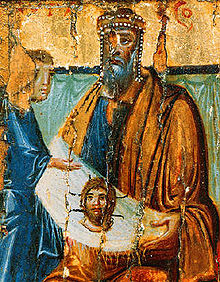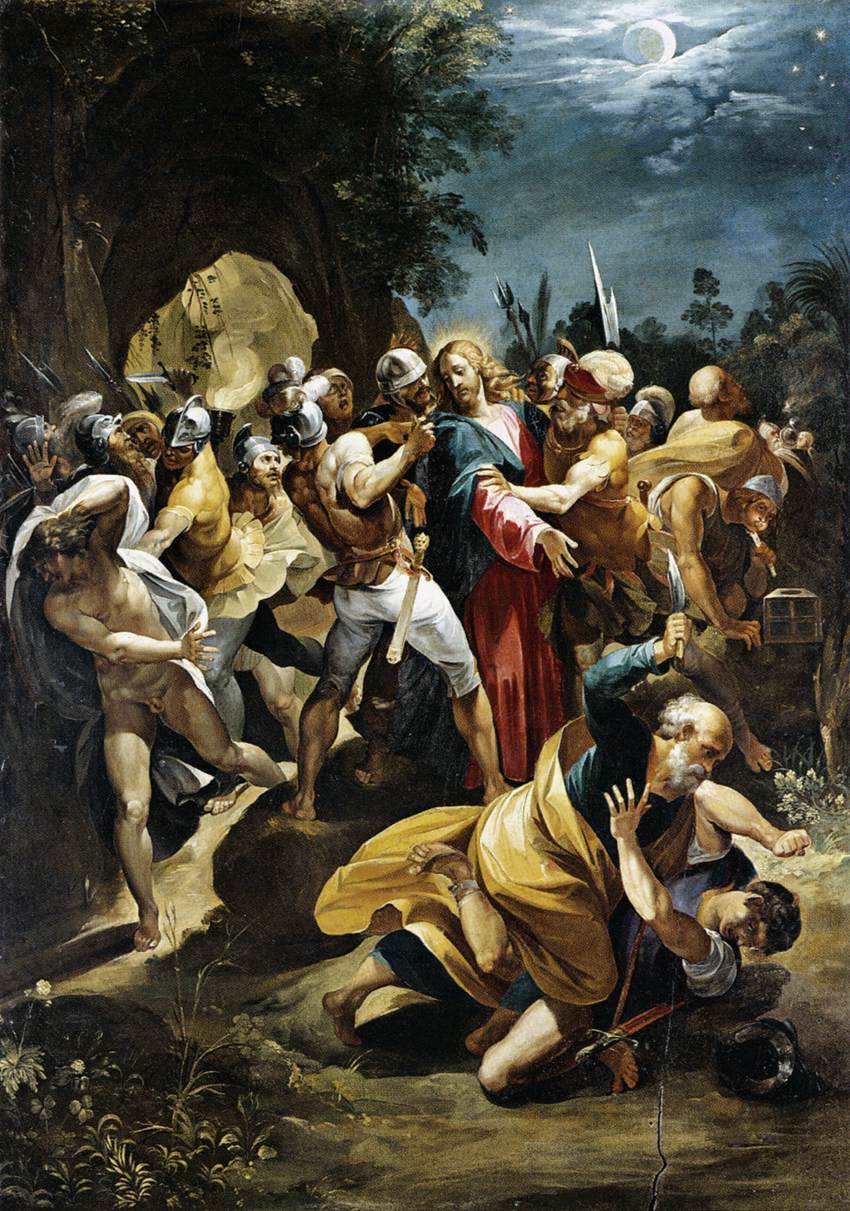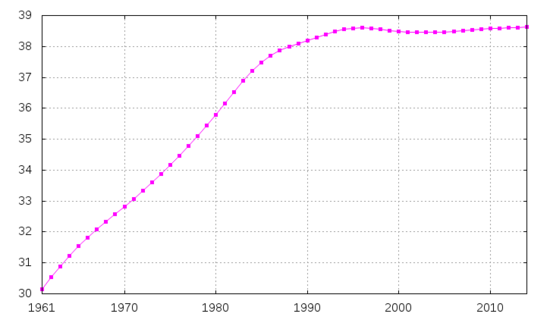© Stephen E. Jones[1]
Shroud
Here is entry #8, of my "Turin Shroud Encyclopedia," about the term "shroud" itself. For more information about this series, see the Main Index "A-Z", and sub-indexes "S", "C," and "D."
[Above: "Christ Taken Prisoner," 1597, by Giuseppe Cesari (c. 1568-c. 1640)[2]. The depiction is of Mark 14:43-52, where Jesus, having been betrayed by Judas, has been taken prisoner, and Peter (Jn 18:10) (right) had cut off the ear of the servant of the high priest (v.47) while (left) (vv.51-52):
"a young man [presumably Mark[3]] followed him, with nothing but a linen cloth [Gk. sindon - the same word for "shroud"] about his body. And they seized him, but he left the linen cloth and ran away naked."]
[Main index] [Entry index] [Previous #7] [Next #9]
Introduction. The word "shroud" in the English New Testament is the Greek word sindon, which occurs seven times in five verses: 1) as the linen bed sheet that covered the otherwise naked young man (Mark-see above) who had surreptitiously followed Jesus to the Garden of Gethsemane (Mk 14:51-52 - twice); and 2) the linen shroud that Jesus' body was enfolded (Mt 27:59; Mk 15:46 - twice); and Lk 23:53[4]. Sindon also occurs in the Septuagint, the Greek translation of the Old Testament, in Judges 14:12-13 and Proverbs 31:24[5], where it denotes "linen garments." So sindon had a general meaning as a linen garment or large cloth rather than being specifically funerary[6].
Other words for Jesus' burial clothes. Othonia. Plural[7] of othonion "linen cloth"[8], hence "linen cloths" (Lk 24:12; Jn 19:40; 20:5,6,7). In the Septuagint othonia denotes "linen garments" in Judges 14:13 and "flax" in Hosea 2:5,9[9]. John does not use the word sindon, but describes the body of Jesus as wrapped in othonia - "linen cloths" (Jn 19:40)[10]. And then in his account of the discovery of the burial linens in the empty tomb (Jn 20:5-7) again John uses the word othonia "linen cloths"[11] as a generic plural for grave-clothes[12]. But see on entry #9. Luke 24:12 uses othonia to include what he had previously in Lk 23:53 described as the sindon[13]. Again see on entry #9. Although it is not mentioned among the linen cloths used in the burial of Jesus, it is probable that Jesus had his hands, feet and possibly his jaw bound by keiriais, narrow strips of linen[14] with which Lazarus was bound (Jn 11:44)[15].
Soudarion is translated "handkerchief(s)" (Lk 19:20; Acts 19:12) and "face cloth" (Jn 11:44; 20:7). It is a transcription into Greek of the Latin word sudarium, from the Latin sudor, to sweat, hence a cloth for wiping sweat from the face[16]. The Sudarium of Oviedo, a linen cloth measuring about 85 x 53 cms (34 x 21 ins)[17], has been in Spain since the seventh century[18]. It has traditionally been claimed to be the "the face cloth [soudarion], which had been on Jesus' head" (John 20:7)[19]. This has been confirmed by scientific findings of the Centro Español de Sindonología (CES) that, "the stains [on the Sudarium of Oviedo] ... coincide exactly with the face of the image on the Turin Shroud" and especially "when the stains on the Sudarium are placed over the image of the ... beard; the match is perfect":
"The most striking thing about all the stains [on the Sudarium of Oviedo] is that they coincide exactly with the face of the image on the Turin Shroud. The first fact that confirms the relationship between the two cloths is that the blood on each belongs to the same group, AB ... The length of the nose which produced this stain has been calculated at eight centimetres, just over three inches, which is exactly the same as the length of the nose on the Shroud ... This, however, is not the only point of coincidence between the nasal areas on the two cloths. Both of them, especially the Shroud, contain a high concentration of ground particles and dust in this area. When a man was being led to the place of crucifixion, he had to carry the horizontal bar of the cross, which was probably tied to his outstretched arms and placed across the back of his neck. This meant that whenever he fell, which would have been often after being whipped and with such a weight to carry, he could not protect his face from the impact of the fall. This also explains why this nose was swollen, slightly displaced and bleeding ... Perhaps the most obvious fit when the stains on the Sudarium are placed over the image of the face on the Shroud, is that of the beard; the match is perfect. This shows that the Sudarium, possibly by being gently pressed onto the face, was also used to clean the blood and other fluids that had collected in the beard"[20].
 [Above: Perfect fit of Sudarium of Oviedo (right) to the face on the Shroud of Turin (left)[21]. This is proof beyond reasonable doubt that the Shroud of Turin and the Sudarium of Oviedo once covered the head of the same man[22].]
[Above: Perfect fit of Sudarium of Oviedo (right) to the face on the Shroud of Turin (left)[21]. This is proof beyond reasonable doubt that the Shroud of Turin and the Sudarium of Oviedo once covered the head of the same man[22].]
Jesus' sindon through history. Reference to Jesus' sindon throughout history include:
• 1204 - Robert de Clari. French crusader-knight Robert de Clari (c. 1170-c.1216), in his book "History of Those Who Conquered Constantinople," gave an eyewitness account of the events leading up to and including the sack of Constantinople in 1203-4[23] by fellow members of the Fourth Crusade (1202–1204), who were in the city enroute to retaking Muslim-controlled Jerusalem[24]. Included in the wonders that de Clari saw in Constantinople in 1204 was a sindon upon which was the figure of the body of Jesus:
"... there was another church which was called My Lady Saint Mary of Blachernae, where was kept the sheet [sydoines] in which Our Lord had been wrapped, which every Friday rose up straight, so that one could clearly see the figure [figure] of Our Lord on it; and no one, neither Greek nor French, knew what became of this sheet after the city was taken"[25].

[Above: Part of Robert de Clari's Old French account of what he saw in Constantinople in 1204: a sydoine (i.e. sindon) bearing the figure of Jesus[26]!]
In the above quote, sydoines is the Old French rendering of the Greek word sindon, the same word used in the Gospels for the shroud in which Jesus' body was wrapped[27]. And the Old French word figure, which in modern French means "face," before c.1650 meant what it signified in Latin, i.e. `figure', `outline', `form'[28], just as it does in English today[29]. That is, what de Clari saw, in Constantinople in 1204, was a sindon which had Jesus' whole body imprinted on it[30]! This alone is evidence (if not proof) that what we call today the Shroud of Turin was in Constantinople up to at least 1204, over fifty years before the earliest 1260 date of the 1988 radiocarbon dating[31]!
• 1201 - Nicholas Mesarites. Nicholas Mesarites (c. 1163/4–aft. 1216)[32] was the Skeuophylax or Keeper[33] of the relic collection in Constantinople's Pharos Chapel[34]. In 1201 he defended the chapel against supporters of the usurper, John Comnenus the Fat (?-1201), leader of a failed[35] palace revolution[36]. In his 1207 account, "The Palace Revolution of John Comnenus"[37] Mesarites wrote that he had warned the mob against forcing entry to the chapel and looting its contents[38]:
"In this chapel Christ rises again, and the sindon with the burial linens is the clear proof"[39].
As the Keeper of Constantinople's relic collection, Mesarites would have had an intimate knowledge of each relic in it[40] and he regarded this sindon as "the clear proof" of Jesus' resurrection.
Mesarites' "Christ rises again" via "the sindon" is undoubtedly referring to the same sindon as de Clari's "which every Friday rose up straight" (see above)[41]. And by the same Byzantine mechanism which made
[Above: Proposed mechanism, based on the foldmarks on the Shroud discovered by Dr. John Jackson[42], that was used in Constantinople to make the sindon bearing "the figure of Our Lord on it" to rise "up straight" (de Clari) and make it appear as though "Christ rises again" (Mesarites):
"How the Shroud may have been made to 'stand upright' from its casket, for very privileged showings during the last years of its possession in Constantinople. The 'doubled-in-four' crease lines identified by Dr John Jackson (Lettered A-G on diagram 1) and the particularly pronounced set of lines at point F indicate a folding arrangement around an apparatus as indicated in diagrams 2 and 3. The cloth could then have been made to rise upright, as in 4 and 5. The Byzantines delighted in the kind of gadgetry that the crease lines seem to indicate"[43].]
Christ appear to rise again from the Tomb (see above)[44].
In his 1207 account Mesarites also listed the relics which were in the Pharos Chapel in 1201, including:
"The burial sindon of Christ: this is of linen, of cheap and easily obtainable material, still smelling fragrant of myrrh, defying decay, because it wrapped the mysterious [aperilepton], naked dead body after the Passion."[45].
The Greek word aperilepton is variously translated "mysterious" (above), "uncircumscribed"[46], "outlineless"[47] and "un-outlined"[48]. The last two are literally the meaning of aperilepton: [a = "no" + peri = "around" + lepton = "thin"][49], which Mesarites used for this sindon[50]. And the lack of an outline is a major characteristic of the Shroud image[51]!
As also is the "naked dead body" a major, and indeed in the 13th century unique, characteristic of the image on the Shroud[52]. That Jesus' dead body was "naked" is something that Mesarites could not have authoritatively stated unless he had personally seen the imprint of it on this sindon[53]. And Mesarites could not have stated it unless the image of Jesus' naked dead body was clearly evident on this sindon[54].
Taken together, these two reports by Robert de Clari and Nicholas Mesarites, within a few years of each other, show that at the beginning of the 13th century, a linen sindon was among the Imperial relics in Constantinople, which bore the un-outlined image of the naked, dead body of Jesus, which is not merely a description of a burial cloth similar to the Shroud, but a description of the Shroud itself[56]!
• 1190 - Constantinople inventory An anonymous inventory of Constantinople's relics in 1190[57], includes:
"a part of the linens [linteaminum][58] in which the crucified body of Christ was wrapped, a syndon, and the towel [manutergium] sent to King Abgar of Edessa by the Lord, on which the Lord himself transferred his image"[59]
From this time on, both the Edessa cloth and the burial linens, appear in the same Constantinople relic inventory lists[60]. This listing of both the Shroud (sindon) and the "towel" upon which Jesus supposedly "transferred his image" and then sent it to "King Abgar of Edessa" (the Image of Edessa), poses an apparent problem for Ian Wilson's theory that the Image of Edessa was the Shroud "doubled in four" (tetradiplon)[61]. But as Wilson rightly points out:
"While such duplication is disquieting ... it is easy enough to account for ... If the Byzantines wanted to acknowledge that they had Jesus's burial cloth, as they seem to have done, they could not simply tear up as so much waste paper the Image of Edessa's tradition that Jesus had created it in life, as an image just of his face. ... this would not have been in the Byzantine mindset. Their solution would have been to use a copy of the Image as the 'face only' relic and gradually suggest that there existed an imprint on the burial linens likewise"[62]
• 1171 - William of Tyre. In the late 12th century, to find allies against the growing power of the Moslems, the Byzantium emperor Manuel I Comnenus (1118-1180) actively courted visits from Western leaders[63]. One such visit was by King Amaury (or Amalric I)[64] of Jerusalem (1136-1174) in 1171, accompanied by his entourage including William II, Archbishop of Tyre (c. 1130–1186)[65]. William was also a  historian[66], and in his "Historia rerum in partibus transmarinis gestarum"[67]
historian[66], and in his "Historia rerum in partibus transmarinis gestarum"[67]
[Right: "William of Tyre writing his History"[68].]
("History of Deeds Done Beyond the Sea")[65], he recorded as an eyewitness[69] that the emperor:
"...ordered to be exposed the relics of the saints, the most precious evidence of the Passion of our Lord Jesus Christ, that is the Cross, nails, lance, sponge, reed, crown of thorns, sindon, and sandals ..."[70].
In the accompanying French text the sindon was further described as:
"...the cloth which is called the sisne [Old French variant of sindon[71]] in which he was wrapped ..." [72].
This can only be the Shroud, 89 years before the earliest 1260 date of the 1988 radiocarbon dating[73]!
• 958 - Constantine VII Porphyrogenitus. In 958, Emperor Constantine VII Porphyrogennitus (905-959)[74] sent a letter of  encouragement[75] to his troops campaigning around Tarsus,
encouragement[75] to his troops campaigning around Tarsus,
[Left: Constantine VII Porphyrogennetos depicted being crowned by Christ (see full image)[74].]
telling them that he was sending them holy water consecrated by:
"... the precious wood [of the Cross], the unstained lance ... the reed which caused miracles ... the sindon which God wore [theophoron sindonos][76], and other symbols of the immaculate Passion ..."[77].
This is the first known documentary reference to Jesus' sindon being in Constantinople[78]. Constantine, who had personally viewed up close the Image of Edessa on its arrival in Constantinople in 944, made no  mention of the latter in his 958 letter, which is inexplicable
mention of the latter in his 958 letter, which is inexplicable
[Right: Constantine VII Porphyrogenitus in 945 depicted as King Abgar V of Edessa in this 10th century icon at Saint Catherine's Monastery, Sinai[79], receiving the Image of Edessa from Jesus' disciple Thaddeus[80].
unless in the interim it had been discovered that behind the face of the Edessa Cloth was folded Jesus' full burial sindon[81]. Constantine's description of this sindon as theophoron "God-worn"[82] is a significant advance on the Edessa Image legend where the living Jesus' face image was supposedly imprinted on a towel[83], and is:
"... a clear sign that the Sindon seen by Robert de Clari was in the imperial relic collection by the mid tenth century - a full 300 years before the earliest date indicated by the carbon dating of the Shroud"[84].
Because of this and other evidence, agnostic art historian Thomas de Wesselow concluded:
"The Shroud of Turin, then, was once the Sindon of Constantinople. Seen in public by Robert de Clari and his fellow Crusaders in 1203-4, it was kept before then in a state of religious purdah, witnessed only by members of the Byzantine court and esteemed visitors, who, once initiated, could be trusted to keep the secret of its astonishing image. Historical records show that the Sindon was kept in the Pharos Chapel as part of the imperial relic collection, being first documented there in 958, 400 years before it was put on show in the small French village of Lirey[85]" (my emphasis)!
• 8th century - St. John of Damascus. St. John of Damascus, or John Damascene, (c.675/676–749)[86], in his De Imaginibus ("On ![]() Images"[87], includes in the relics associated with Jesus, "the shrouds [tas sindonas] and the cloths of the tomb"[88].
Images"[87], includes in the relics associated with Jesus, "the shrouds [tas sindonas] and the cloths of the tomb"[88].
[Left: "Saint John Damascene (Arabic icon)"[86].]
Although John here referred to sindons plural, evidently including the other burial cloths[89], in a sermon he used the singular, sindoni to refer to the Shroud[90]. That John of Damascus knew that Jesus' sindon was a Shroud of Turin-sized linen cloth is evident in that he wrote in about 730 that Jesus had impressed His image on a himation, which was an oblong cloth almost two yards wide and three yards long (~1.8 x ~2.7 m), and was the outer garment of an ancient Greek[91].
• 2nd century - Gospel of the Hebrews. The earliest mention of Jesus' sindon having been preserved is in a quotation by St. Jerome, from the lost second-century "Gospel of the Hebrews"[92]. According to this apocryphal `gospel'[93], after his resurrection Jesus had given his burial shroud (sindon) to the "servant of the priest":
"The Gospel that is called `according to the Hebrews,' which I have recently translated into both Greek and Latin, a Gospel that Origen frequently used, records the following after the Savior's resurrection: `But when the Lord had given the linen cloth [sindon][94] to the servant of the priest, he went and appeared to James.' (Jerome, Illustrious Men, 2)"[95].
This is one of a number of second century apocryphal books including, The Acts of Pilate, Gospel of Peter, The Acts of Nicodemus, and The Gospel of Gamaliel, which mention that Jesus' burial shroud was saved from the tomb[96]. They disagree with each other who saved it, but they all agree that Jesus' burial shroud had been saved[97].
I will present the evidence in my next post in this series, entry #9, that Jesus did in fact give His sindon to "the servant of the priest," as preserved in this very early account in The Gospel of the Hebrews.
Conclusion. The above is proof beyond reasonable doubt that the cloth known today as the Shroud of Turin was the "linen shroud" (Gk sindoni, sindona) that wrapped the dead body of Jesus (Mt 27:59; Mk 15:46; Lk 23:53)!
Notes
1. This post is copyright. No one may copy from it or any of my posts on this my The Shroud of Turin blog without them first asking and receiving my written permission. Except that I grant permission, without having to ask me, for anyone to copy the title and one paragraph only (including one graphic) of any of my posts, provided that they include a reference to the title of, and a hyperlink to, that post from which it came. [return]
2. Staatliche Museen [State Museum], Kassel, Germany: Friends of Art, 2010. [return]
3. Hendriksen, W., 1975, "The Gospel of Mark," New Testament Commentary, Banner of Truth: Edinburgh UK, British edition, 1976, pp.599-602. [return]
4. Zodhiates, S., 1992, "The Complete Word Study Dictionary: New Testament," AMG Publishers: Chattanooga TN, Third printing, 1994, pp.1290-1291. [return]
5. Ibid. [return]
6. Wilson, I. & Schwortz, B., 2000, "The Turin Shroud: The Illustrated Evidence," Michael O'Mara Books: London, p.44. [return]
7. Ruffin, C.B., 1999, "The Shroud of Turin: The Most Up-To-Date Analysis of All the Facts Regarding the Church's Controversial Relic," Our Sunday Visitor: Huntington IN, p.46. [return]
8. othonion, in Vine, W.E., 1940, "An Expository Dictionary of New Testament Words: With Their Precise Meanings for English Readers," Oliphants: London, Nineteenth impression, 1969, Vol. II., p.346. [return]
9. Ibid. [return]
10. Wilson, I. 1979, "The Shroud of Turin: The Burial Cloth of Jesus?," [1978], Image Books: New York NY, Revised edition, p.57. [return]
11. Ibid. [return]
12. Robinson, J.A.T., " The Shroud of Turin and the Grave-Clothes of the Gospels," in Stevenson, K.E., ed., 1977, "Proceedings of the 1977 United States Conference of Research on The Shroud of Turin," Holy Shroud Guild: Bronx NY, p.24. [return]
13. Ibid. [return]
14. Guerrera, V., 2001, "The Shroud of Turin: A Case for Authenticity," TAN: Rockford IL, p.31. [return]
15. Bulst, W., 1957, "The Shroud of Turin," McKenna, S. & Galvin, J.J., transl., Bruce Publishing Co: Milwaukee WI, p.85. [return]
16. Bennett, J., 2001, "Sacred Blood, Sacred Image: The Sudarium of Oviedo: New Evidence for the Authenticity of the Shroud of Turin," Ignatius Press: San Francisco CA, p.145. [return]
17. Bennett, 2001, p.13. [return]
18. Guscin, M., 1997, "The Sudarium of Oviedo: Its History and Relationship to the Shroud of Turin," Shroud.com. [return]
19. Whanger, A.D. & M.W., "A Quantitative Optical Technique for Analyzing and Authenticating the Images on the Shroud of Turin," in Berard, A., ed., 1991, "History, Science, Theology and the Shroud," Symposium Proceedings, St. Louis Missouri, June 22-23, 1991, The Man in the Shroud Committee of Amarillo, Texas: Amarillo TX, pp.303-324, p.312. [return]
20. Guscin, M., 1998, "The Oviedo Cloth," Lutterworth Press: Cambridge UK, pp.28-292. [return]
21. Bennett, 2001, plate 20. [return]
22. See also my post, "My critique of Charles Freeman's `The Turin Shroud and the Image of Edessa: A Misguided Journey,' part 4: `The Shroud of Turin and the Sudarium of Oviedo' (2)," July 28, 2012. [return]
23. Dembowski, P.F., 1982, "Sindon in the Old French Chronicle of Robert de Clari," Shroud Spectrum International, Issue #2, March, pp.13-17, p.13. [return]
24. "Fourth Crusade," Wikipedia, 4 September 2014. [return]
25. de Wesselow, T., 2012, "The Sign: The Shroud of Turin and the Secret of the Resurrection," Viking: London, p.175 (words in square brackets de Wesselow's). [return]
26. Copenhagen Royal Library, MS 487, fol. 123b.. See Wilson, I., 1998, "The Blood and the Shroud: New Evidence that the World's Most Sacred Relic is Real," Simon & Schuster: New York NY, p.125 [return]
27. de Wesselow, 2012, p.175. [return]
28. Wilson, 1998, p.253. [return]
29. Wilson, 1998, p.243. [return]
30. Wilson, 1998, p.124. [return]
31. Wilson, 1998, p.125. [return]
32. "Nicholas Mesarites," Wikipedia, 15 February 2014. [return]
33. Scavone, D.C., 1989a, "The Shroud of Turin: Opposing Viewpoints," Greenhaven Press: San Diego CA, p.89. [return]
34. Wilson, 1979, p.167. [return]
35. "John Comnenus the Fat ," Wikipedia, 31 July 2014. [return]
36. Currer-Briggs, N., 1987, "The Shroud and the Grail: A Modern Quest for the True Grail," St. Martin's Press: New York NY, pp.62-63. [return]
37. "Excerpts from 'The Palace Revolution of John Comnenus by Nicholas Mesarites," Shroud Spectrum International, Issue #17, December 1985, pp.23-27, p.23. [return]
38. Scavone, 1989a, p.89. [return]
39. Wilson, 1979, p.167. [return]
40. Scavone, 1989a, p.89. [return]
41. de Wesselow, 2012, p.176. [return]
42. Jackson, J.P., 1984, "Foldmarks as a Historical Record of the Turin Shroud," Shroud Spectrum International, Issue #11, June. [return]
43. Wilson. & Schwortz, 2000, p.112. [return]
44. Wilson, 1998, pp.154-157 [return]
45. Wilson, 1979, pp.167-168. [return]
46. Wilson, I., 1991, "Holy Faces, Secret Places: The Quest for Jesus' True Likeness," Doubleday: London, p.155. [return]
47. Wilson, 1998, p.145. [return]
48. de Wesselow, 2012, p.176. [return]
49. Zodhiates, 1992, pp.57, 1140, 917. [return]
50. Wilson, 1998, p.145. [return]
51. Ibid.. [return]
52. de Wesselow, 2012, p.176. [return]
53. Wilson, 1998, p.145. [return]
54. Wilson, 1991, p.155. [return]
56. de Wesselow, 2012, p.177. [return]
57. Wilson, 1998, p.271. [return]
58. Ibid. [return]
59. Wilson, 1991, p.154. [return]
60. Scavone, D., 1989b, "The Shroud of Turin in Constantinople: The Documentary Evidence," in Sutton, R.F., Jr., "Daidalikon: Studies in Memory of Raymond V Schoder," Bolchazy Carducci Publishers: Wauconda IL, pp.320-321. [return]
61. Wilson, 1979, pp.118-124. [return]
62. Wilson, I., 2010, "The Shroud: The 2000-Year-Old Mystery Solved," Bantam Press: London, pp.184-185. [return]
63. Wilson, 1979, p.165. [return]
64. "Amalric I of Jerusalem," Wikipedia, 19 July 2014. [return]
65. "William of Tyre," Wikipedia, 2 September 2014. [return]
66. Tribbe, F.C., 2006, "Portrait of Jesus: The Illustrated Story of the Shroud of Turin," Paragon House Publishers: St. Paul MN, Second edition, p.25. [return]
67. Wilson, 1979, p.314n29. [return]
68. "From a 13th-century Old French translation, Bibliothèque Nationale, Paris, MS 2631, f.1r: "William of Tyre," Wikipedia, 2 September 2014. [return]
69. Scavone, 1989b, p.320. [return]
70. Wilson, 1979, p.166. [return]
71. Dembowski, 1982, p.18. [return]
72. Wilson, 1979, p.166. [return]
73. Damon, P.E., et al., 1989, "Radiocarbon Dating of the Shroud of Turin," Nature, Vol. 337, 16th February, pp.611-615, p.611. [return]
74. "Constantine VII," Wikipedia, 26 September 2014. [return]
75. Wilson, 1998, p.268. [return]
76. de Wesselow, 2012, p.177. [return]
77. Wilson, 1991, p.153. [return]
78. Wilson, 1998, p.269. [return]
79. "Abgar V," Wikipedia, 3 July 2014. [return]
80. Wilson, 1979, pp.154-155. [return]
81. Wilson, 1991, pp.153-154. [return]
82. de Wesselow, 2012, p.177. [return]
83. Wilson, 1979, p.120. [return]
84. de Wesselow, 2012, pp.177-178. [return]
85. de Wesselow, 2012, p.181. [return]
86. "John of Damascus," Wikipedia, 18 September 2014. [return]
87. O'Donovan, O., 1999, "The Desire of the Nations: Rediscovering the Roots of Political Theology," Cambridge University Press, p.292. [return]
88. De Imaginibus, Oratio III., p. 778. Beecher, P.A., 1928, "The Holy Shroud: Reply to the Rev. Herbert Thurston, S.J.," M.H. Gill & Son: Dublin, p.146. [return]
89. Green, M., 1969, "Enshrouded in Silence: In search of the First Millennium of the Holy Shroud," Ampleforth Journal, Vol. 74, Autumn, pp.319-345. [return]
90. Beecher, 1928, p.146. [return]
91. Drews, R., 1984, "In Search of the Shroud of Turin: New Light on Its History and Origins," Rowman & Littlefield: Lanham MD, p.39. [return]
92. Wilson, 1979, p.92. [return]
93. Scavone, 1989a, p.74. [return]
94. Wilson, 1979, p.92. [return]
95. Ehrman B.D., 2003, "Lost Scriptures: Books that Did not Make It into the New Testament," Oxford University Press: New York NY, p.16. [return]
96. Scavone, 1989a, p.74. [return]
97. Ibid. [return]
Created: 21 September 2014. Updated: 24 May 2016.











